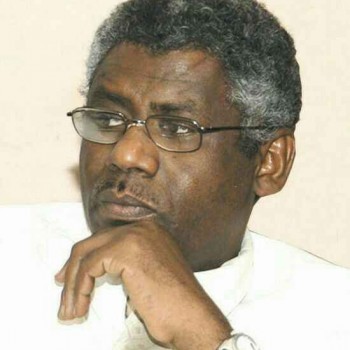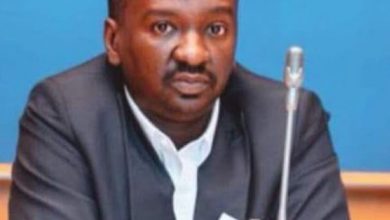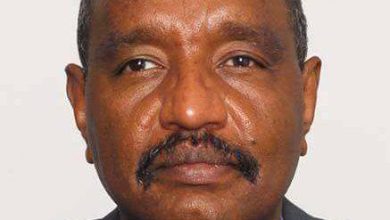Popular Armed Resistance in Sudan….Heading where?

As I see
By Adel El Baz
Heated debate prevailed within the political circles pitching supporters of the idea of popular resistance and those opposing it, and each side holds to its positions. The idea around which the controversy is now revolved began in the first months of the war, when the Commander-in-Chief of the Sudanese Army called on veterans and those capable of carrying arms to go to the military areas to aid the army, which seemed to be saying he suffers from a severe shortage of infantry forces.
Repeated reports revealed that the Sudanese army had stopped new recruitment for years and relied on the RSF to combat the insurgency in the various regions of Darfur, and empowered RSF to recruit until their numbers – as paramilitary forces – exceeded 100,000 troops.
It began with forces called the Border Guard, then developed into semi-regular forces with a law issued in 2017, and then the state contributed to arming them and provided them with broad training opportunities and participation in foreign assignments that made them develop huge relationships and resources, in addition to their work in the field of investments and trade through their many companies, especially in the field of gold.
Popular Resistance
The response to the army commander’s call for mobilization at first was limited, and those who rushed to join the army camps remained without sufficient training or firearms to fight the raging battles in the Sudanese capital, Khartoum, in the first three months, which frustrated the idea and made the flow of mobilized personnel diminish little by little
The turning point in the issue of popular resistance began after the RSF invaded the city of Medani (200 kilometers south of the capital, Khartoum) at the end of last year, and then those forces flowed in to seize large areas of Gezira State in central Sudan.
Its attacks were accompanied by widespread killing and looting of the property of citizens and the state alike. From that moment, the call for popular armed resistance in the Gezira region began to gain momentum, and citizens were soon called to bear arms in defense of themselves, their cities, their villages, and their honor.
Then, calls continued for groups of mobilized people in other states, which had begun training thousands of young people in army camps. The call spread to most of the northern regions of Sudan, and thousands of citizens and youth flocked in response to the general mobilization.
At a time when the massive response to the call for mobilization and taking up arms escalated under the name of “popular resistance,” the state remained silent for a period of time until the army commander, President Al-Burhan, under popular pressure, nodded to the popular resistance. He announced last December 25 in the city of Suakin, east of Sudan which expressed its support for the popular armed resistance, and ordered the arming of everyone who can carry arms to confront the RSF, which expanded into other states outside the capital, Khartoum.In the same address , President Al-Burhan called for organizing the resistance under the umbrella of the armed forces, so that it would not get loose and create yet another dangerous problem, and he promised to arm it.
However, the government pledges to provide arms for the citizens to defend themselves were extremely limited and slow, prompting some regions to rush to collect donations from the people to arm the resistance without waiting for government response, especially since fears of the RSF controlling other regions in the Eastern Region and the White Nile Region spread, escalating amazingly fast.
The logic of those who called on citizens to bear arms, or the so-called “Mustanifarin” who formed the armed popular resistance, was that the army fighting across an area of Sudan of 1,886,000 square kilometers was unable to defend citizens in every village, town, and city in that vast area.
Some of the army’s military units are also besieged, and are already suffering from a shortage of infantry forces and an inability to deliver supplies to the areas that need them, due to the RSF’s’ control of many main roads, in addition to the fact that the army itself suffers from a shortage of weapons supplies.
Amid widespread fears that gripped citizens due to what they saw of campaigns of intimidation, killing and rape carried out by the RSF in other areas in western Sudan, its capital Khartoum and the city of Wad Medani in the center of the country, for all these reasons, the call for armed popular resistance found a large response from citizens in the states of northern and central Sudan.
On the other hand, the opposition civilian forces abroad rejected the calls for general mobilization and stood against the establishment of popular resistance, arguing that these calls would incite military conflict at a time when they themselves were adopting dialogue under the slogan “No to war.” They said that this call to arm citizens could ignite a civil war in the country among tribal and ethnic components and could lead to the country’s redivision.
What was known as the Democratic Civil Forces Coordination (Taqaddam) called for restricting weapons to the state, considering that only states might monopolize the tools of violence.
A third and most important reason: the opposition believes that the Islamists (their strategic enemies) are seeking, behind calls for mobilization, to escalate the war in order to return to power.
Resistance and the future of war
With the widespread response to the mobilization by different sects and sectors of the people, the armed popular resistance has become an important element in the conflict between the army and the RSF, as it now appears that the army is not fighting alone, but rather is backed by millions who support it in the war, in addition to the fact that the resistance has begun to financially support army units. Different states have also begun to organize themselves and their structures, making their support and influence in the war more effective.
The armed popular resistance is featured by three basic characteristics, which, if properly employed, can qualify it to play decisive roles in influencing the course of the war. The first is that it relies on its own resources to finance itself, and this contributes to direct material support for the war effort, especially since the government suffers from serious deficit, significantly clear in its 2024 budget.
Revenues from last year also declined to less than a third, and are expected to rise slightly this year, but with the increase in military spending burdens, they will suffer from a horrific deficit in their revenues. The United Nations announced that the Sudanese economy has declined by up to 42% as a result of damage to manufacturing facilities and destruction of infrastructure due to the war, leading to mass unemployment.
The second characteristic is that it has the incentive to fight in defense of its citizens, their money, honor, and property. In the armed popular resistance, it is established and operates in a regional basis, so it has more loyalty and incentives to defend those regions.
The people of geographically threatened areas know their areas and the ways to reach them, which enables them to plan well to defend them better, at a time when the RSF do not have the advantage of knowledge of the geography of the north of the country, as most of their members did not fight any battles in northern and eastern Sudan.
What most distinguishes the armed popular resistance is its mobilization of the residents of the regions to defend their areas without regional or ethnic separation. Now, for example, all ethnic groups are joining the ranks of the armed popular resistance in all the regions of the north, east, and center in which all Sudanese ethnicities live, which makes the resistance an element of unity that nourishes and contribute in national cohesion and strengthening the social fabric.
Several dangers surrounding popular armed resistance.
There is a fear that weapons will escape and spread away from state control among citizens, making it impossible to control them in the future. This is a great danger. There is also a fear that some parties will exploit the resistance and use it to their vested political benefit, their agenda and their programs.
Therefore, in order for the popular resistance to succeed in performing its mission in a specific period and with a limited mission, which is to defend the people in their homes, it needs to organize structures and establish a unified leadership for it, and it also needs unity of purpose and motivation, and these factors decisively determine its ability to withstand amidst local and global changes until it achieves its goals.
(((((The popular armed resistance is featured by three basic characteristics, which, if properly employed, can qualify it to play decisive roles in influencing the course of the war. The first is that it relies on its own resources to finance itself, and this contributes to direct material support for the war effort.))))



